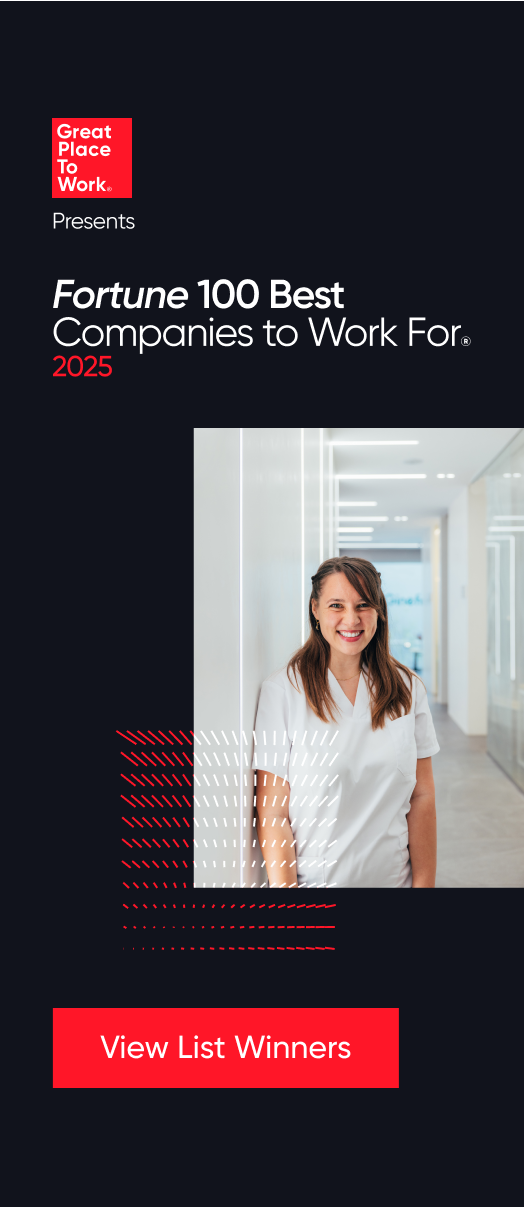Developing Leaders, Diversity & Inclusion, Leadership & Management, Training & Development
Learn the four ways the technology firm develops and engages employees of all backgrounds.
The C-suite is increasingly interested in learning and development programs.
Economic headwinds have many companies rethinking their talent management strategy. But, the roles companies need to fill aren’t getting less complicated.
That’s why many companies see learning and development as the answer, with 50% of leadership and development professionals reporting working with executive leadership other than the CHRO, per a LinkedIn report.
Why mentorship matters
Mentorship programs are having a profound impact on workplace culture.
More than nine in 10 workers who have a mentor are satisfied with their jobs. Workers with a mentor are also more likely to say they’re well paid and believe their contributions are valued by their colleagues.
Mentorship programs have also been tied to diversity, equity, inclusion and belonging (DEIB) progress. Women and people of color are more likely than others to say that mentorship is very important to their career development. Mentorship has also shown to have a greater impact on increasing diverse representation in leadership than other tactics such as diversity training and hiring tests.
4 keys to success
1. Listen to employees.
Don’t launch a mentorship program at your organization without first asking your employees for input.
That’s the top tip from Jerome Goyhenetche, group director, culture and talent development, and Tina Jones, senior vice president of global human resources at Cadence, who spoke about the global tech firm’s mentorship program at the 2022 For All™ Summit held by Great Place To Work®.
Cadence began by listening to employees, and used its employee resource groups (ERGs) to identify how a mentorship program could help improve the employee experience.
It found that what employees most valued wasn’t necessarily something that required a big budget.
“Cadence has a number of more expensive leadership programs,” explained Goyhenetche. “But the one thing we always hear from those learning and development programs, what's everyone's favorite thing: networking with the other leaders.”
To help employees connect, Cadence invested in software called Chronus that would help pair employees to build valuable mentor/mentee relationships across the organization.
“We targeted these mentorship programs,” explains Goyhenetche, “allowed all of our Black, Latinx, and women [employees] globally to sign up for a mentor — and then targeted more mid-level and senior-level management to be a mentor.”
Pairings are highly intentional, and the team has adjusted how it selects the appropriate mentor based on employee feedback.
“We might say, ‘Let's drop it down a level. Maybe employees just want to mentor who's one level ahead versus three, four levels ahead,’” Goyhenetche gave as an example.
The result? Career advancement and professional development for underrepresented groups in the workforce and learning opportunities for managers acting as mentors, some having their first experience working with an employee of a different background than their own.
2. Involve middle managers.
If you build a mentorship program, will employees take advantage of the resource? Not necessarily.
That’s why you have to make sure managers are involved and supportive, Goyhenetche said.
“Let’s also make sure the managers are aware, ‘Your employee is being invited to this’ — and not just going straight to the employee,” he says. “So, the manager can say, ‘I heard you're being invited. Are you going to consider taking a mentor?’”
It also helps to have the stamp of the CEO.
“We’re at that great place with a new CEO who wants to leave his mark and understands the importance of DE&I,” Jones shared. “He wants that $100 billion marquee company status, and he thinks this is critical to getting there — not only is it also the right thing to do and something he cares about, but he sees it as a business imperative.”
3. Set clear expectations and goals for mentors and mentees.
“If you just say, ‘Be a mentor,’ that's a little bit too open,” Goyhenetche said. “And some people will know exactly what that means and others will say, ‘I have no idea what that means.’”
Help mentees understand how to make the most of the program.
“You can’t just wait for the mentor to do all the work and to provide all the wisdom.” Goyhenetche said.
The key is to deliver tailored, timely information to make participation simple and easy.
“We’re giving guidance and sending separate communications with all that information to both groups to make it feel easy and quick to engage and jump in,” Goyhenetche said. Done right, people will realize that you don’t need experience. “It’s not something you need to have done before. Anybody can be a really good mentor.”
4. Define a time limit for the mentorship program.
“We make it a finite amount of time, and I think that makes it less scary for both [mentor and mentee],” Jones said. “And then as the mentee, you do have to come prepared. The work is really on the mentee, to be honest. So come prepared, do your homework, make the most out of it.”
Measuring success
How will you know if your mentorship program is having the desired impact? Cadence uses benchmarks that it gets from the software it uses to pair mentors and mentees, as well as survey check-ins throughout the program.
However, the biggest indicator for Cadence that the program is valuable to employees is when participants sign up to be part the program a second time.
“A lot of them come back and they say, ‘I want to receive another mentor. I would like an opportunity to meet with another employee or another leader,’” Goyhenetche said.
Jones recommended starting small, and using your metrics to prove that your concept has value. “Get money for a three-to-six-month pilot,” she said. “Show some success — generally the funding will continue with some success.”
Subscribe
Learn how to create an award-winning company culture. Subscribe to the Great Place To Work company culture newsletter and join 100,000+ other leaders learning how to create a great workplace.











